Wallpaper* gets behind the button-festooned wheel of the Mercedes-Benz EQS
With tantalising tech, including a sci-fi Hyperscreen display, and superb range, the Mercedes-Benz EQS looks and feels like the new face of luxury electric vehicles
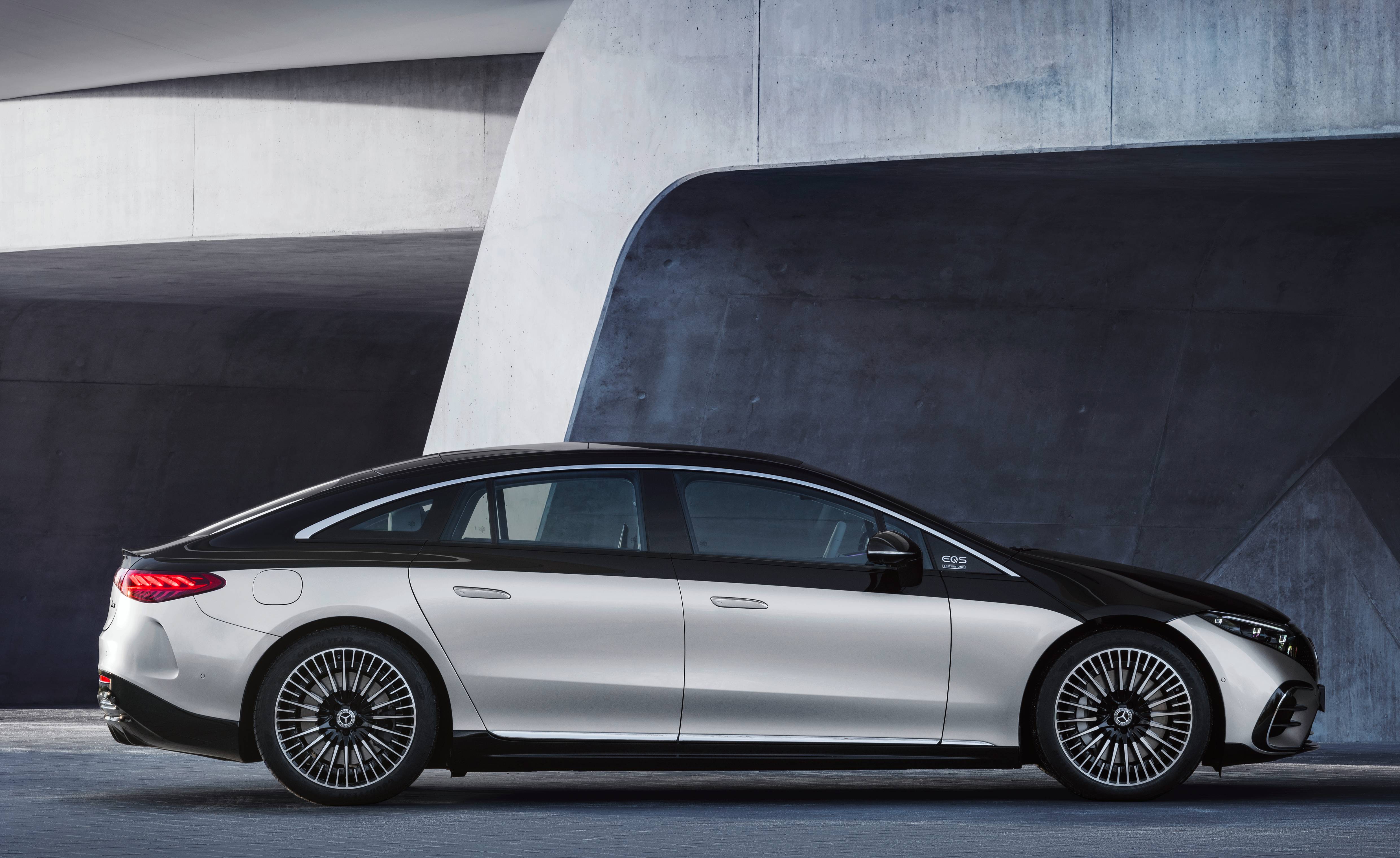
The mighty Mercedes-Benz EQS has arrived to redraw the landscape of luxury mobility. EVs have always been expensive, thanks to the high costs of R&D into drivetrains and batteries, ensuring that the first generation of electric cars tended to skew towards the upper end of the market.
It’s only been in the past couple of years that smaller, more utilitarian EVs have emerged, although they’re still at a premium in comparison to their ICE equivalents.
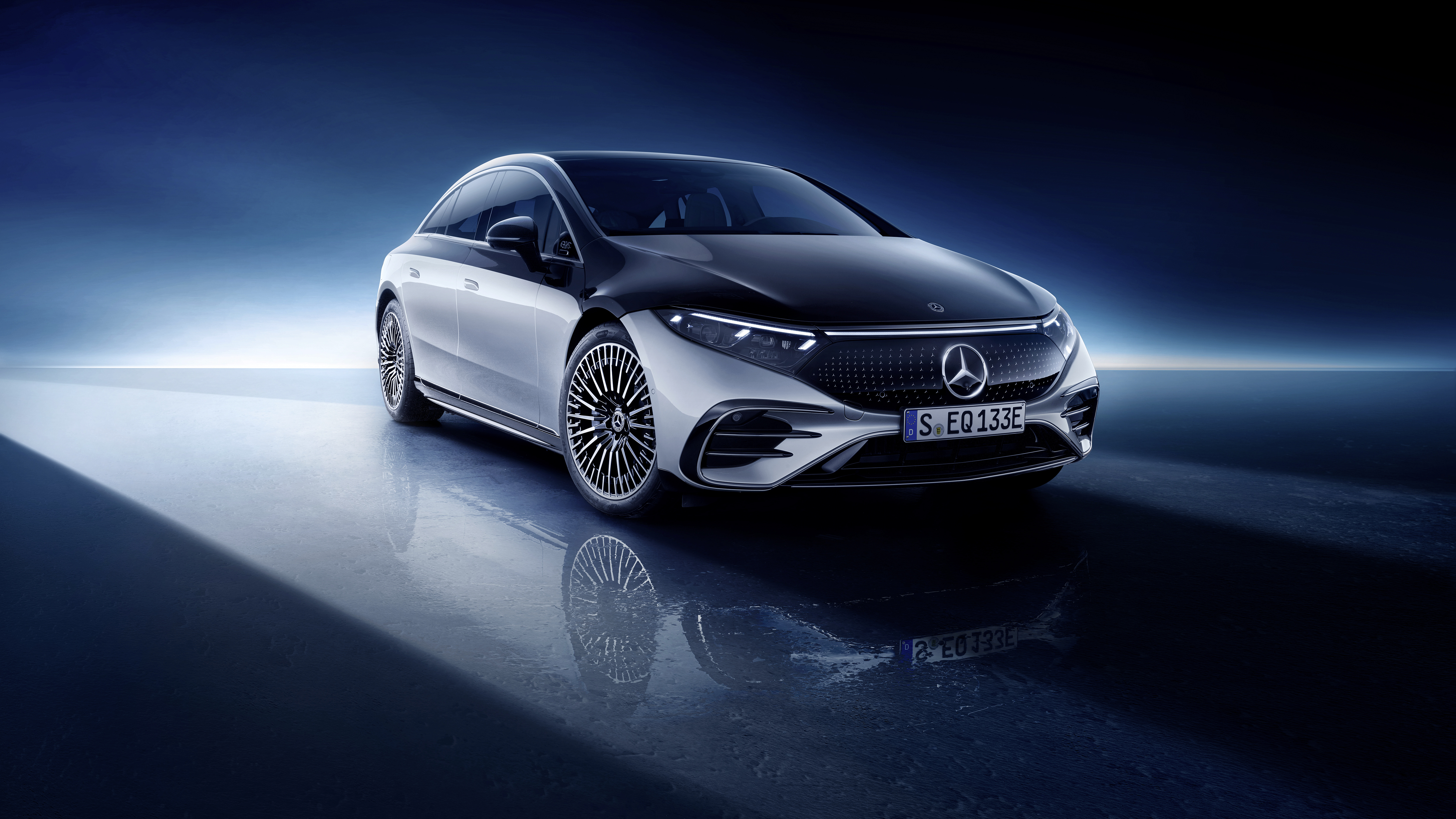
The new face of electric luxury: Mercedes-Benz EQS
Big milestones are looming, in particular 2025, by which time a host of companies have pledged to offer only pure electric or hybrid drivetrains. For manufacturers of high-end sports cars, these shifts are way more freighted. When you’ve spent decades building your image off the back of the visceral qualities of the internal combustion engine, suddenly switching to the near-silent whine of an electric motor will require radical reappraisal.
Luxury car makers, however, have an advantage. Mercedes-Benz (which can trace its origins back to 1883) and Rolls-Royce (founded in 1906) have spent well over a century refining the explosive process of internal combustion into a silky-smooth operation that is barely perceptible to drivers, passengers, or even passers-by.

An atypical environment in which to find a car: the EQS
Emissions, however, have remained stubbornly perceptible, despite increasingly intense attempts at mitigation. So on the one hand, electrification is a lifeline for new luxury, enabling a number of paradigm shifts to all happen at once: new forms, new technology, new levels of experience.
However, paradigm shifts are the antithesis of traditional luxury, a category built on heritage, provenance, and steady evolution.
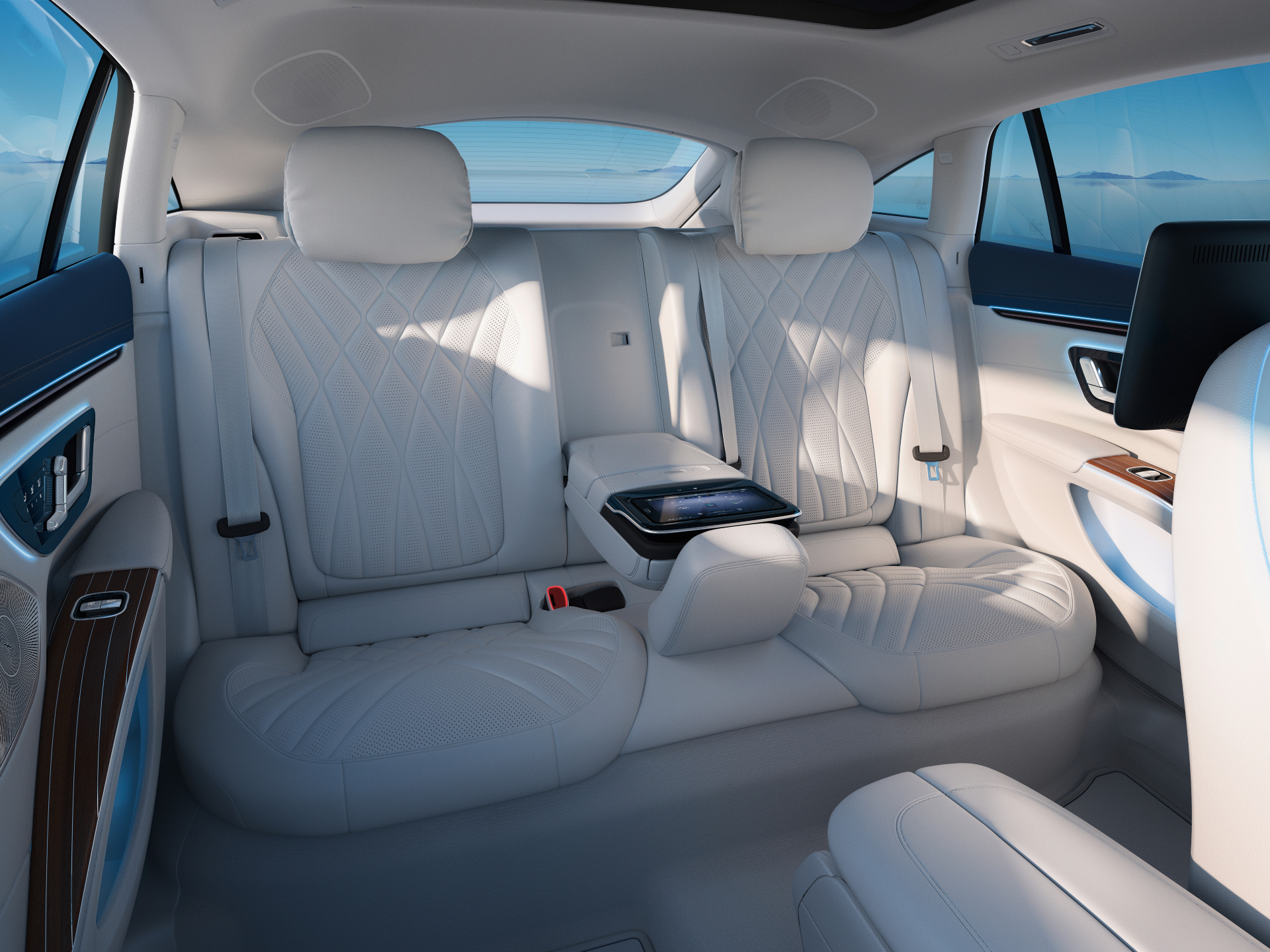
For many owners, this is the best place to be
This is a long-winded way of explaining why the Mercedes-Benz EQS (introduced by Mercedes’ design chief Gorden Wagener in a previous article) is what it is. For a start, it co-exists alongside the S-Class limousine, long considered the gold standard of high-end luxury, refinement, and engineering. The radical move would have been to usurp the S-Class altogether, but instead, the EQS is the automotive equivalent of a transitional fossil, a car that represents the shift from one group to another. It is almost – but not quite – sufficient to do the job of the S-Class.
Receive our daily digest of inspiration, escapism and design stories from around the world direct to your inbox.
By waiting until EV technology is sufficiently advanced to offer superb range (officially rated at around 480 miles, although in real-world situations it’s still well over 300 miles), the EQS banishes the very un-luxurious spectre of range anxiety.
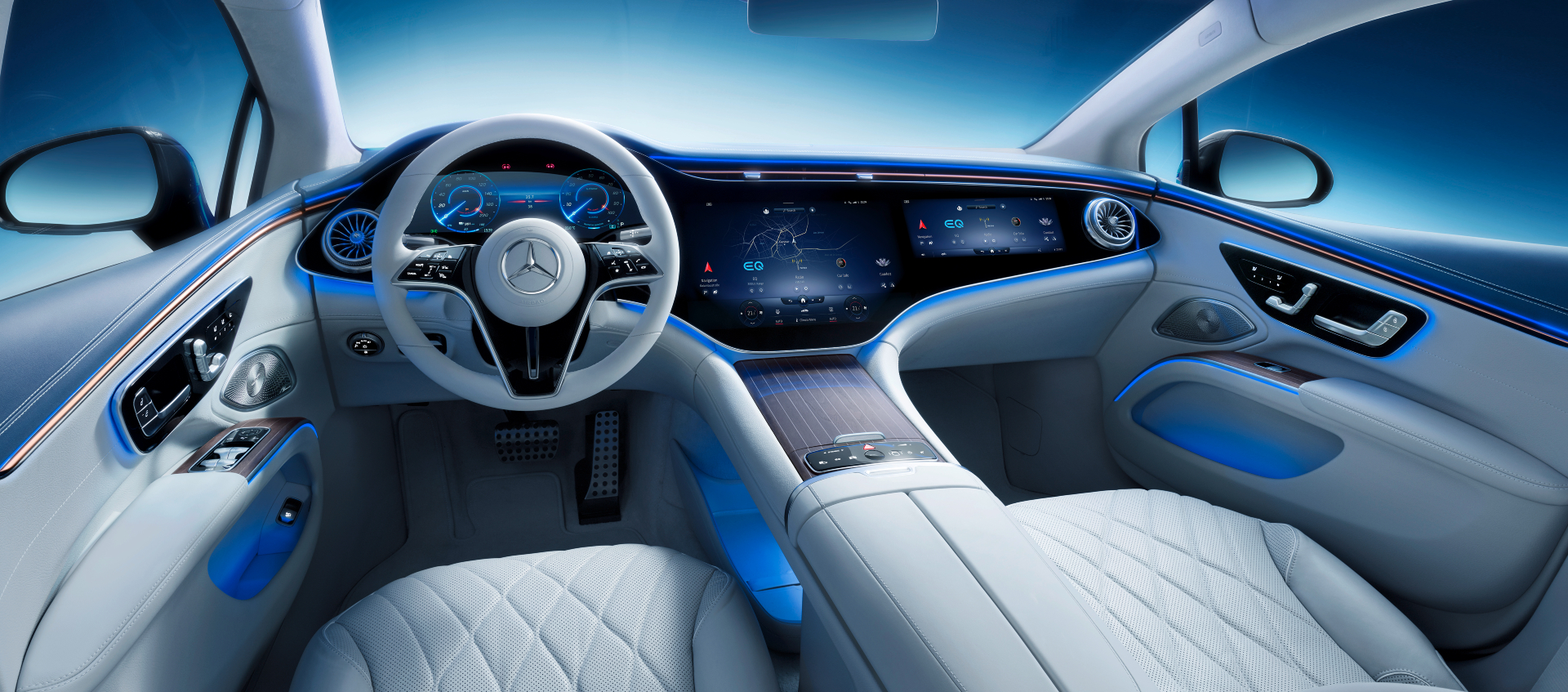
The bridge of the EQS: the Hyperscreen
Instead of worrying about finding the next charge point, driving the EQS gives you other things to think about, with a science fiction-style dashboard that spans the entire width of the car. This is Mercedes’ ‘Hyperscreen’, the evolution of the flatscreen instrument panel taken to its logical conclusion. A single piece of curved black glass actually houses three screens (there’s also a head-up display), including a separate display for the front-seat passenger.
The wealth of information available is discombobulating to the uninitiated. Of course, confusion is not something to be encouraged when driving a car, so the system works hand in hand with a layer of sensor technology that not only monitors what’s going on outside, but what you’re doing as you drive. This ranges from checking your attention levels to stopping you from taking sneaky looks at the passenger’s screen when you’re supposed to be driving (a sensor detects your eye movement and shuts the secondary screen down).

Sophisticated graphics on the EQS’ central screen
Driving is another area where the EQS straddles two worlds. For many years, Mercedes has had some of the best quasi-autonomous safety systems on the market, technology that filtered down through the range from the S-Class. Mercedes’ cars were among the first to effectively park themselves, or use radar-based cruise control to keep a safe distance from the car in front. They had the most seamless self-steering systems for staying in lane, whilst scanning the road ahead for possible dangers. These are now commonplace technologies, but there’s something about the big EQS’ high-tech ambiance that inspires a bit more confidence in the underlying system. It invites you to put more trust in the machine.
On the highway, this is great. Regardless of traffic levels, speed, or weather, the EQS will glide along all by itself, checking periodically that you’re still paying attention. It is not autonomy, just a very sophisticated form of cruise control. The confidence it inspires is important, because it allows you to actually find the right spot to press on the vast screen, rather than constantly shift your attention between road and screen. You can also talk to the car, another area of tech where Mercedes has doggedly persisted and largely succeeded. Using ‘Hey Mercedes’ as an opening gambit, you can follow it up with an abstract request – ‘I’m cold,’ ‘I’m tired,’ etc – and the system will respond by boosting the temperature, suggesting you take a break or initiating one of the wellness programmes built in to its copious infotainment system.
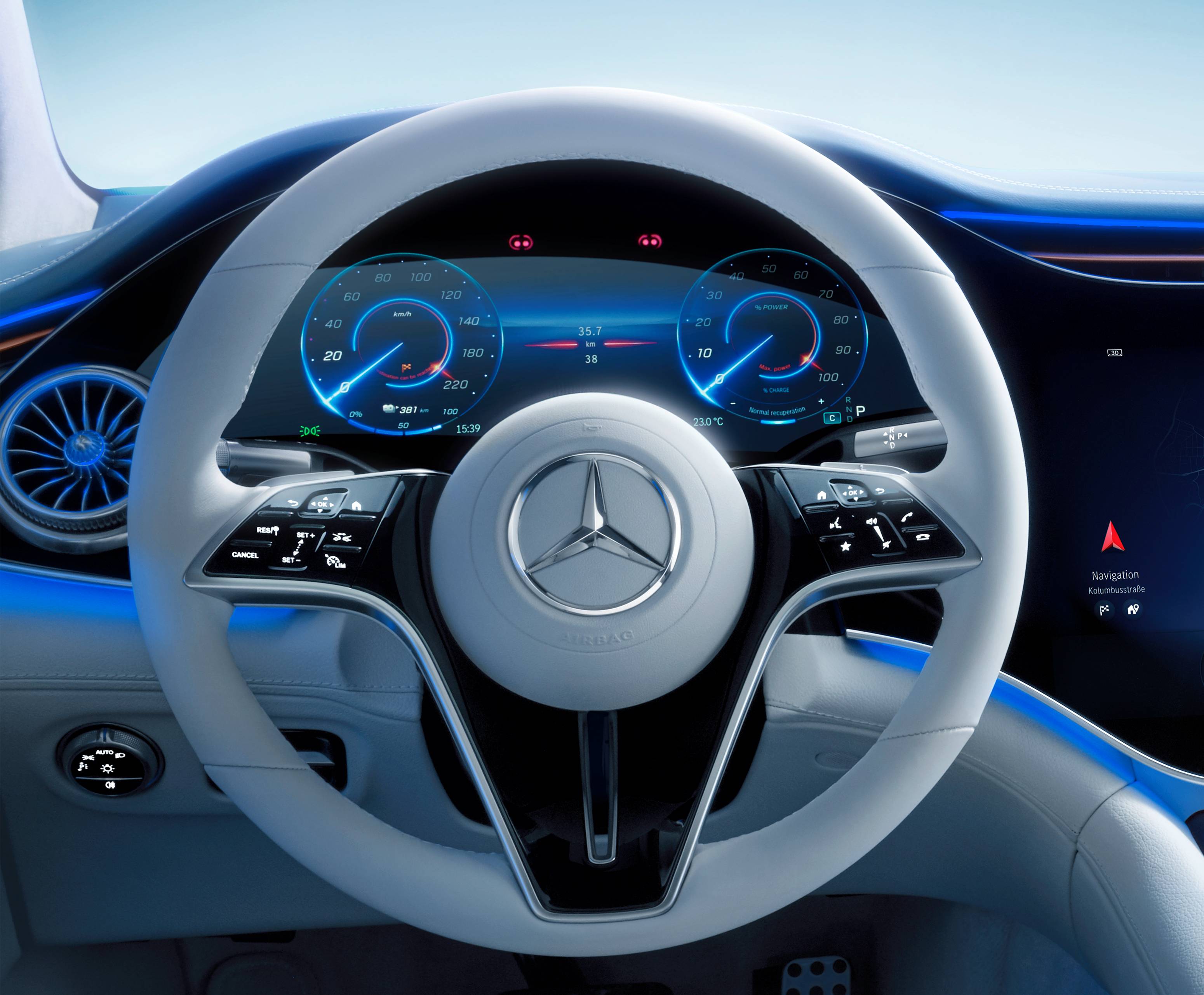
Putting the ’multi’ into multifunctional, the EQS’ steering wheel
Physically, the EQS resembles an S-Class that has undergone an experimental procedure, with a longer wheelbase and a stretched glasshouse that reaches almost to the tail of the car (and incorporates a hatchback, not a conventional boot).
In particular, the nose feels like it’s a shift between one era and another. The grille – now home to sensors, not cooling – incorporates the clever LED headlights and bears a massive three-pointed star. But it already feels a bit old-fashioned to have a grille at all, especially when seen alongside Mercedes-Benz’s most recent concept car, the EQXX, which references the sloping nose of a streamlined sports car instead.
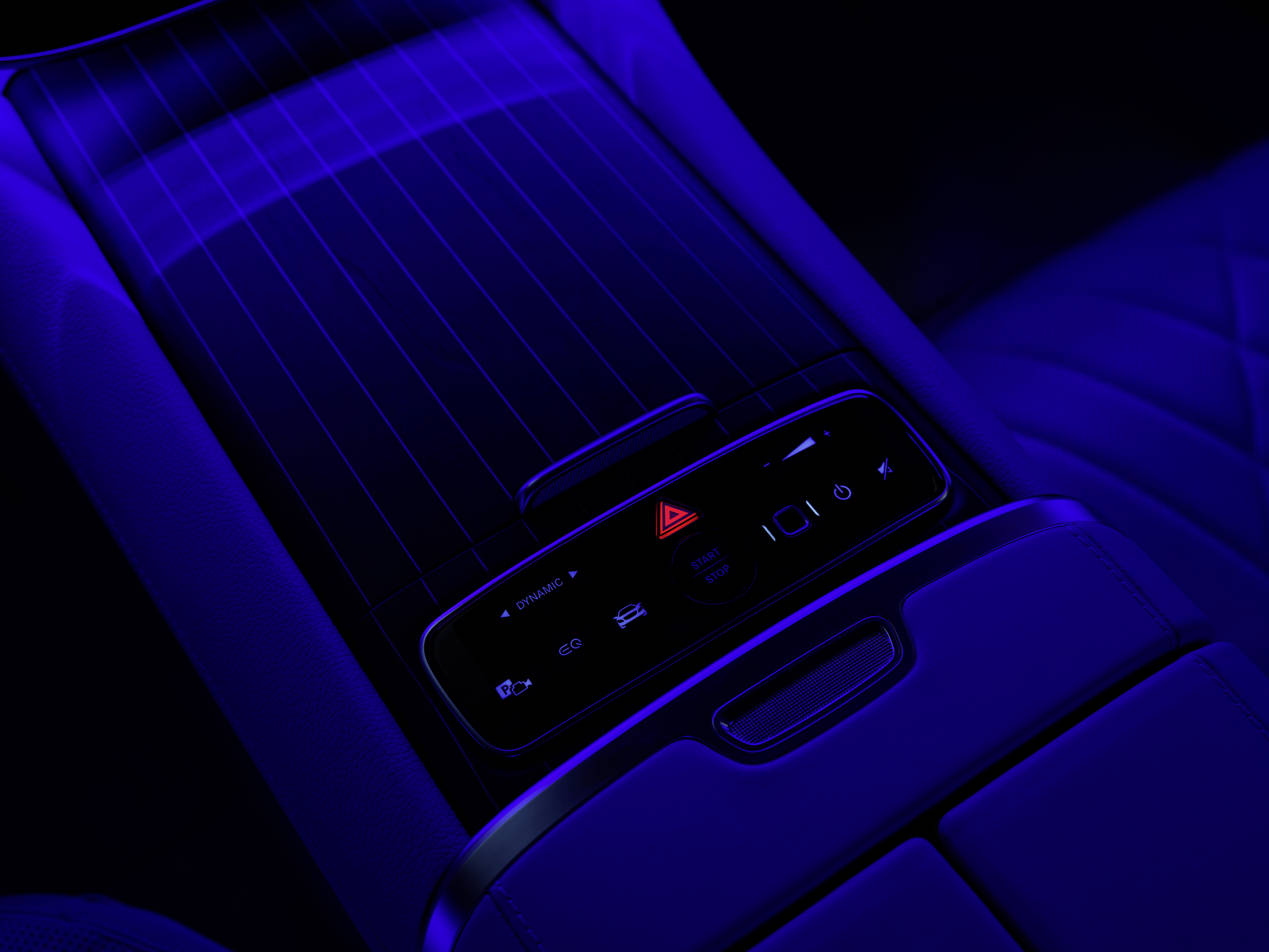
Meticulous attention to detail characterises the EQS’ interior
Car makers are currently rebranding themselves as ‘mobility providers’, a catch-all definition that embraces the ambiguity of our relationship with the traditional automobile. At one end of the scale, you have the EQS, which is effectively the car as gated community, a gilded cage that secures you from the world outside. The flipside is machines like the Citroën AMI, a car that is almost equivalent to common, publicly-held infrastructure. The still-distant promise of pure autonomy promises more of the latter, but the EQS exists to remind us that the luxury private car will never really go away.
INFORMATION
Mercedes-Benz EQS, from £99,995
Jonathan Bell has written for Wallpaper* magazine since 1999, covering everything from architecture and transport design to books, tech and graphic design. He is now the magazine’s Transport and Technology Editor. Jonathan has written and edited 15 books, including Concept Car Design, 21st Century House, and The New Modern House. He is also the host of Wallpaper’s first podcast.
-
 Five watch trends to look out for in 2026
Five watch trends to look out for in 2026From dial art to future-proofed 3D-printing, here are the watch trends we predict will be riding high in 2026
-
 Five destinations to have on your radar this year
Five destinations to have on your radar this yearThe cultural heavyweights worth building an itinerary around as culture and creativity come together in powerful new ways
-
 Dublin-based designer Cara Campos turns abandoned bicycles into sleekly minimal furniture pieces
Dublin-based designer Cara Campos turns abandoned bicycles into sleekly minimal furniture piecesWallpaper* Future Icons: Saudi-raised Irish/French designer Cara Campos' creative approach is rooted in reuse, construction and the lives of objects
-
 Gorden Wagener leaves the helm of Mercedes-Benz design after 28 years with the company
Gorden Wagener leaves the helm of Mercedes-Benz design after 28 years with the companyThe German designer is stepping down from the role of chief design officer at Mercedes-Benz. We look back at his influence and impact on the world of automotive and luxury design
-
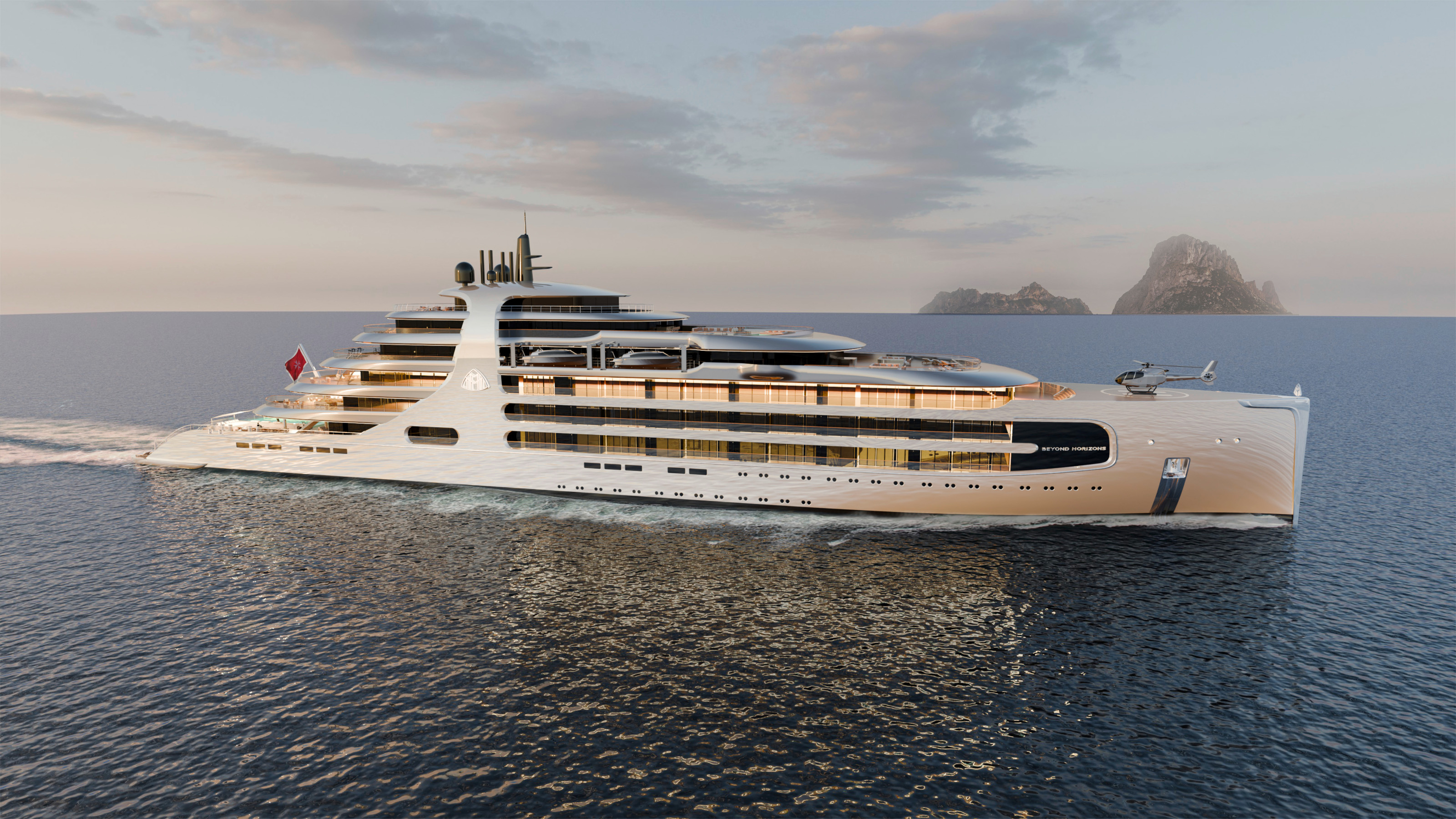 The Maybach Ocean Club is a floating members’ club for the super-rich
The Maybach Ocean Club is a floating members’ club for the super-richMercedes-Benz Design has announced the upcoming Maybach Ocean Club, a ship-based enclave inspired by automotive luxury
-
 Rivian hits Miami Art Week to release R1S Quad Miami Edition, a new colour and a scent
Rivian hits Miami Art Week to release R1S Quad Miami Edition, a new colour and a scentVivid sights and evocative smells are part of Rivian’s quest to humanise its all-electric SUVs
-
 RBW EV brings a much-loved classic sports car aesthetic into the modern era
RBW EV brings a much-loved classic sports car aesthetic into the modern eraThe RBW Roadster and GT hark back to a golden age of sports car design. Under the skin, these British-built machines feature bespoke all-electric running gear
-
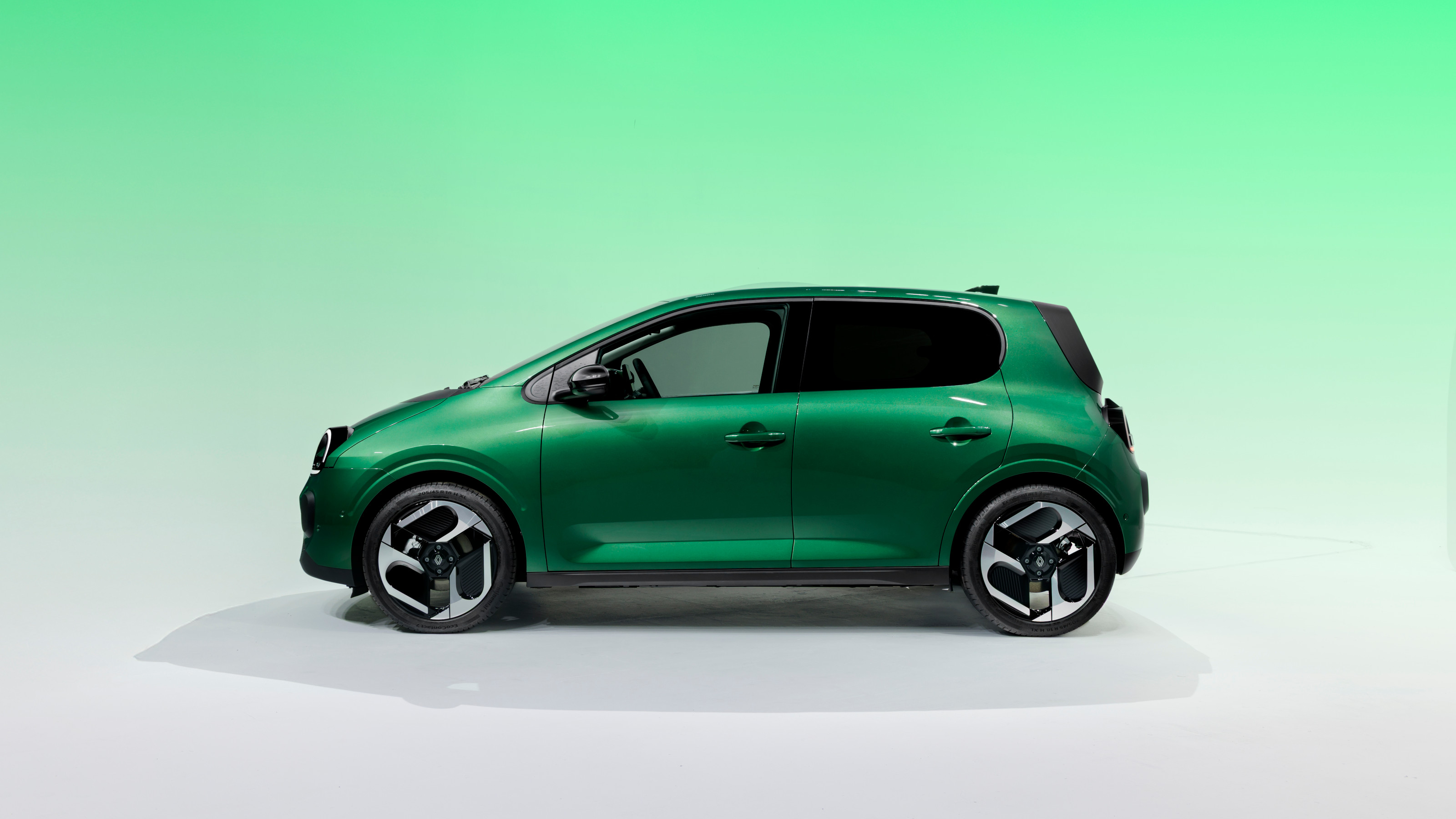 All hail the compact new Renault Twingo E-Tech – the city car is back in style
All hail the compact new Renault Twingo E-Tech – the city car is back in styleRenault continues to pay homage to its heritage by combining it with 21st-century technology. The new Twingo E-Tech is another winner
-
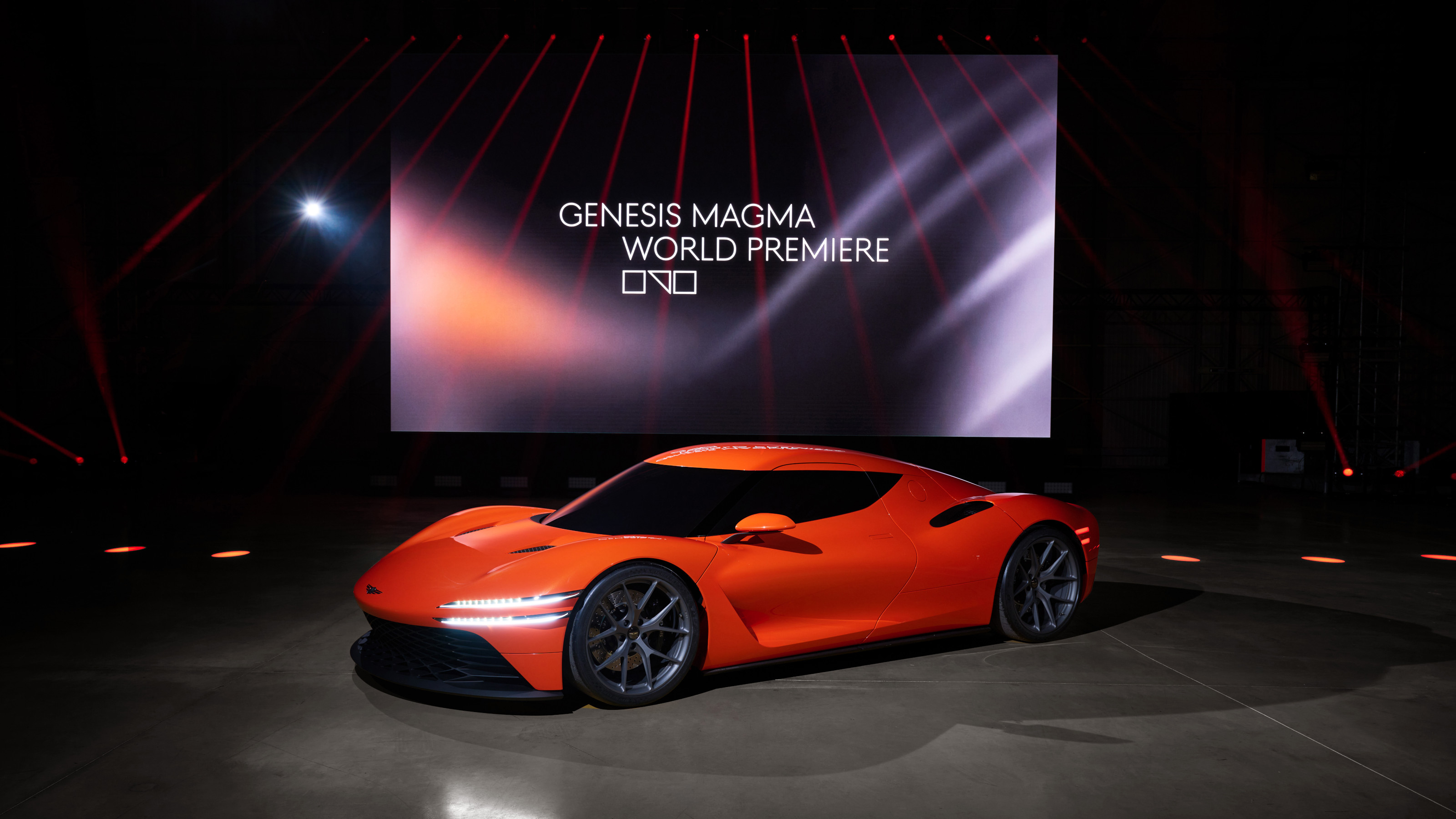 Genesis turns up the heat with its new Magma performance sub-brand
Genesis turns up the heat with its new Magma performance sub-brandGenesis has revealed the hot new GV60 Magma and striking Magma GT Concept in its quest to own luxury performance
-
 Around London in sybaritic silence with the majestic all-electric Lunaz Phantom V
Around London in sybaritic silence with the majestic all-electric Lunaz Phantom VClassic electrifier Lunaz has turned its skilled hands to the Rolls-Royce Phantom V. We sample the ultimate in zero-emission luxury on the streets of London
-
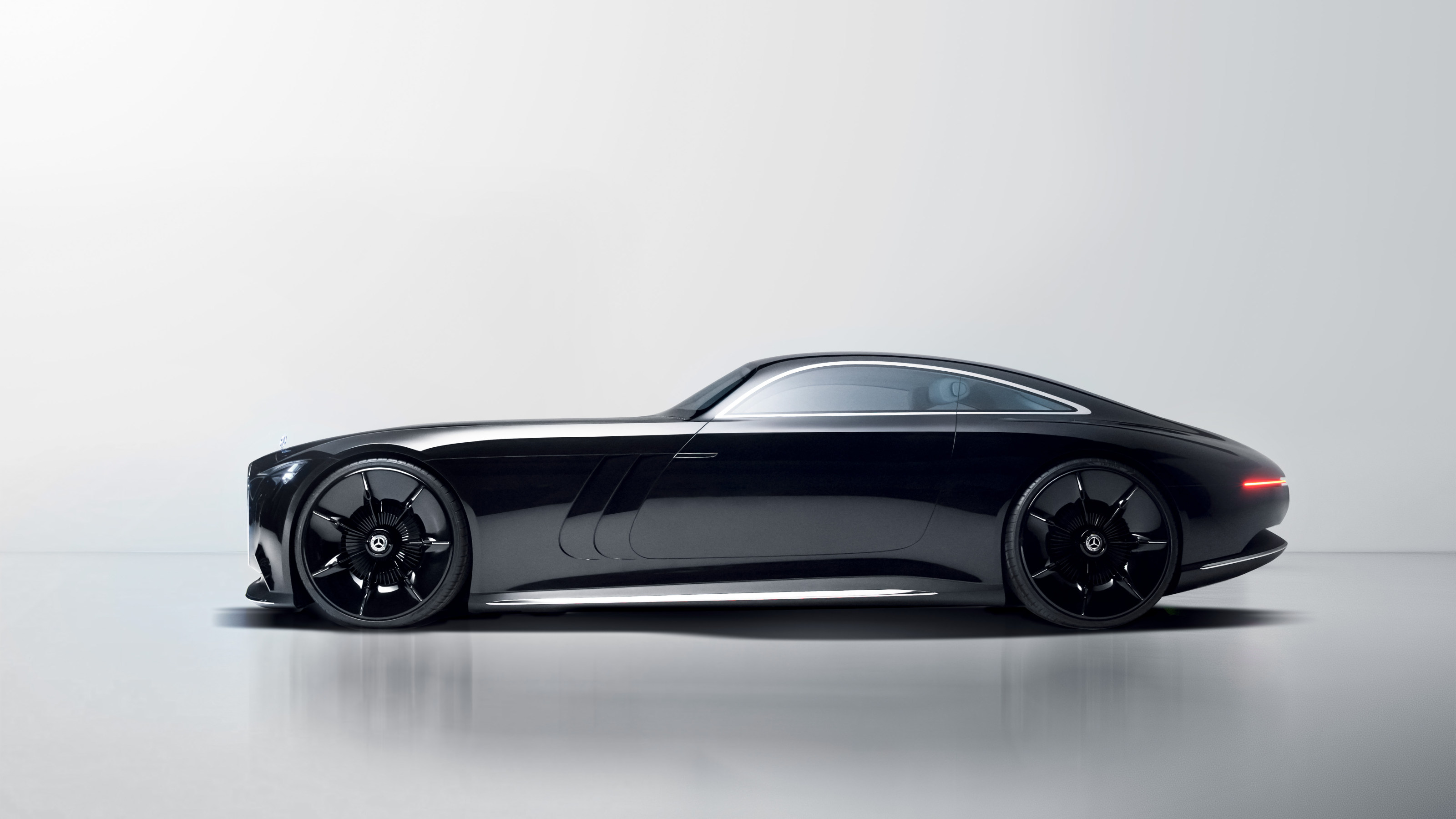 The Mercedes-Benz Vision Iconic is automotive haute couture, a concept with cinematic style
The Mercedes-Benz Vision Iconic is automotive haute couture, a concept with cinematic styleThe Vision Iconic concept makes a play for a new approach to future luxury, blending art-deco excess with neo-gothic trimmings and monumental scale